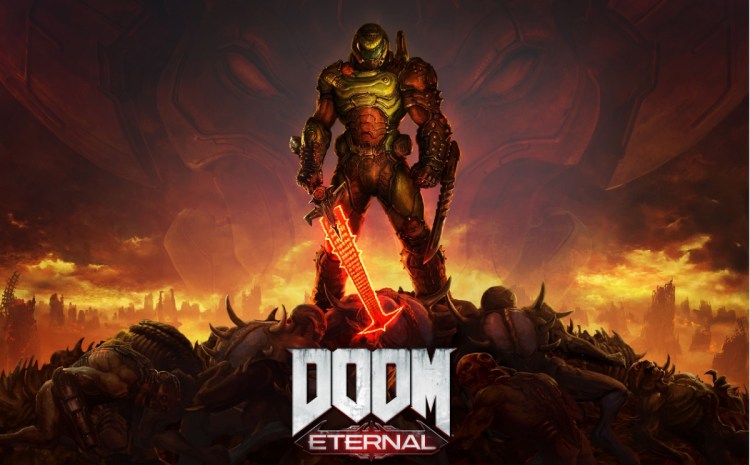Ultra HD 4K was one of the major promises that Google laid out for its Stadia cloud-gaming service at last year’s Game Developers Conference. Now, developer id Software is backpedaling on its claims of supporting that resolution on the platform.
While Doom is going to hit at 60 frames per second on Stadia, it’s not going to reach a true 4K (2160p) resolution. Instead, it’s going to rely on upscaling.
Here’s publisher Bethesda Softworks on Doom Eternal’s Stadia specs:
“Doom Eternal on Stadia will run at 1080p @60 FPS on HD displays and up-sample to 2160p from 1800p @60 FPS on 4K displays.”
That is a significant compromise — although it likely isn’t a devastating one for Doom Eternal on Stadia. But it’s another indicator of how developers are struggling to squeeze all of the potential power out of Google’s remote server hardware.
And this is not a problem that studios were anticipating. As part of Stadia’s GDC 2019 rollout, id promised full 4K for Doom Eternal.
“We couldn’t be happier to be bringing Doom Eternal to Stadia,” id director Marty Stratton said. “[And we] are thrilled to announce that the game will be capable of running at true 4K resolution with HDR color at an unrelenting 60 frames per second.”
Stadia players will get the 60 FPS and the HDR. But Doom Eternal is coming up short of “true 4K.”
Of course, the question is now “why?” What is causing these difficulties? Google claims that Stadia has 10.7 teraFLOPS of GPU power. By comparison, the Xbox One X has only 6 teraFLOPS. But this reveals how unreliable the teraFLOPS number is. When it comes to real-world performance, the ease of optimization and development tools are far more important than raw potential.
But it’s also possible that Doom Eternal is just more demanding than originally anticipated.
Doom Eternal isn’t struggling just on Stadia to hit true 4K60
It’s worth backing up and giving Stadia the benefit of the doubt here. Maybe the issue is the game and not the platform. And there’s reason to think that’s the case.
Bethesda also included the PC specs for hitting various levels of fidelity on PC. And even on Windows, the game requires some heavy-duty hardware muscle. Here are the recommended requirements to run the game at 4K60 on “Ultra-Nightmare settings”:
- CPU: Intel Core i9-9900K or better, or AMD Ryzen 7 3700X or better
- Memory: 16GB System RAM
- GPU: NVIDIA GeForce RTX 2080 Ti (11GB) or AMD Radeon VII (16GB)
Those are some eye-bulging requirements. The i9-9900K is what Intel called the “best gaming CPU ever” when it launched last year. You can buy that for $500. Thankfully, the excellent Ryzen 7 3700X is slightly more reasonable at $300.
But the 4K60-requisite GPUs are even more shocking. On the Nvidia side, the developer calls for an RTX 2080 Ti, which is still $1,200. For AMD, you’ll need a Radeon VII, which was $700 when it debuted. You can find it now for $600, but I would really recommend against doing that. The Radeon VII might crush Doom Eternal, but its performance is totally obsolete in most games compared to cards like the $500 RTX 2070 Super.
Why is Doom Eternal so demanding?
To be fair to id, nearly every game has extreme requirements for 4K60 at max settings. Even with a 2080 Ti and an i9-9900K, you’ll see dips below 60 in almost every blockbuster release from the last year or so. And Doom Eternal’s requirements speak to that.
The i9-9900K and Ryzen 7 3700X are both 8-core/16-thread CPUs. Think of cores as mouths and threads as hands that grab data and feed it to the mouths for processing. Most games still don’t take advantage of this kind of hyperthreading, but more are starting to. And the implication here is that, at 4K, Doom needs those threads.
The GPU requirement is also telling. The RTX 2080 Ti and Radeon VII have 11GB and 16GB of video memory, respectively. And that huge chunk of VRAM is likely why id Software likes these cards over a very capable RTX 2080 Super that only has 8GB of video memory.
That extra memory is crucial at higher resolutions when the video card needs to push through massive texture files. At that point, the graphics processing doesn’t matter quite as much as the memory bandwidth.
What this all means for Stadia
Let’s wrap back around to Google Stadia.
If we return to the inadequate teraFlOPS numbers, Stadia doesn’t look too bad. Google’s cloud-gaming platform has 10.7 teraFLOPS. But the 2080 Ti has 13.4 teraFLOPS, according to Nvidia. It doesn’t even suggest the 11.1 teraFLOPS of the RTX 2080 Super. So clearly the game needs all that extra power and this isn’t Stadia’s fault, right?
Well, it’s not that easy.
The PC specs are for Ultra-Nightmare settings, which should have every graphic option turned to max.
For Stadia, id Software doesn’t say what graphics settings it’s using. Stadia is much more like a console in that developers are supposed to lock in visual settings to balance against performance. And it’s likely that Stadia is only getting 1800p60 after the developer tuned down various graphical effects.
I’ve reached out to Bethesda to ask about this, but we’ll confirm when the game goes live. We have seen this before, however, with games like Red Dead Redemption 2 that run at lower graphical settings its console counterparts.

